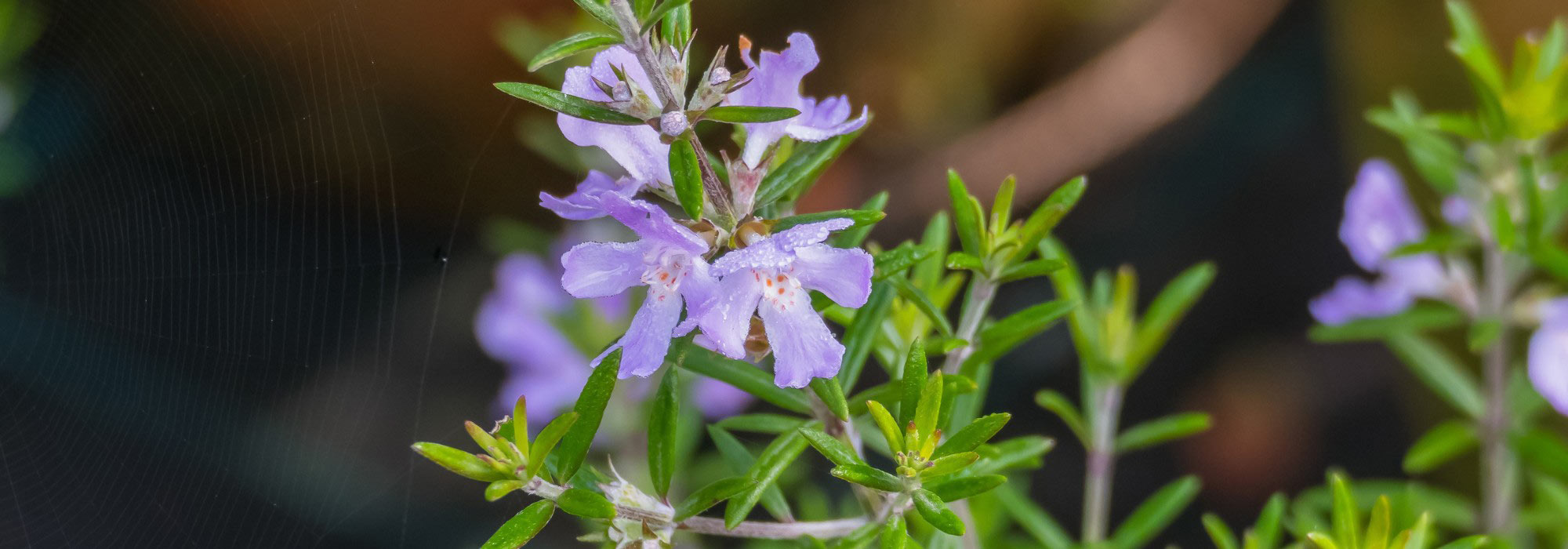
Westringia fruticosa - Australian rosemary: planting, growing, and care
Contents
Westringias in a few words
- The Westringia is a small evergreen bush for well-drained soil
- Its fine green foliage resembles that of rosemary
- It flowers for a long time, with its white or pale blue blooms appearing almost all year round
- Less hardy than rosemary but resistant to sea spray, it is valuable for dry and coastal gardens in mild climates
- It can be used for hedging, in shrub borders, or in containers
The word from our expert
The Westringia fruticosa, commonly known as Australian Rosemary, is a small bush distinguished by its elegant silhouette and its evergreen foliage with silvery-green hues reminiscent of rosemary, though it is not aromatic. This bush, ranging from 50 cm to 3 m in height depending on the variety, serves as a ground cover for dry, sunny areas or forms a dense, green hedge even in winter.
Its delicate pale blue or white flowers (such as those of the Westringia fruticosa ‘White’) bloom from spring to summer, and sporadically throughout the year, providing a long flowering period that delights pollinators. Not very hardy (down to around -5°C), it is best suited to mild climates (coastal, Atlantic, and Mediterranean regions) when planted in the ground, but it adapts well to container cultivation in colder areas.
It is unfazed by drought, sea spray, or poor soil, making it an excellent choice for dry and resilient gardens. Whether in a border, a small hedge, or a pot depending on your region, embrace this easy-going and hardy bush!
Description and Botany
Botanical data
- Latin name Westringia sp.
- Family Lamiaceae
- Common name Australian rosemary
- Flowering May to September
- Height 50 cm to 3 m
- Sun exposure sun, partial shade
- Soil type very well-drained, light, sandy or stony, neutral to slightly acidic
- Hardiness down to -4°C (USDA zone 9b)
Westringia or Australian rosemary is a bush from the Lamiaceae family, just like sage, mint, or even rosemary, to which it is very closely related. It grows naturally in the coastal heathlands of eastern Australia and southern New South Wales. Less hardy than our rosemary, it prefers mild climates and adapts easily to regions with mild winters (coastal, Atlantic, and Mediterranean areas). The genus includes around 25 species, the most widespread of which is Westringia fruticosa. The type species has given rise to a few cultivars, including Westringia fruticosa ‘Mundi’, distinguished by its white flowering and low, ground-covering habit.
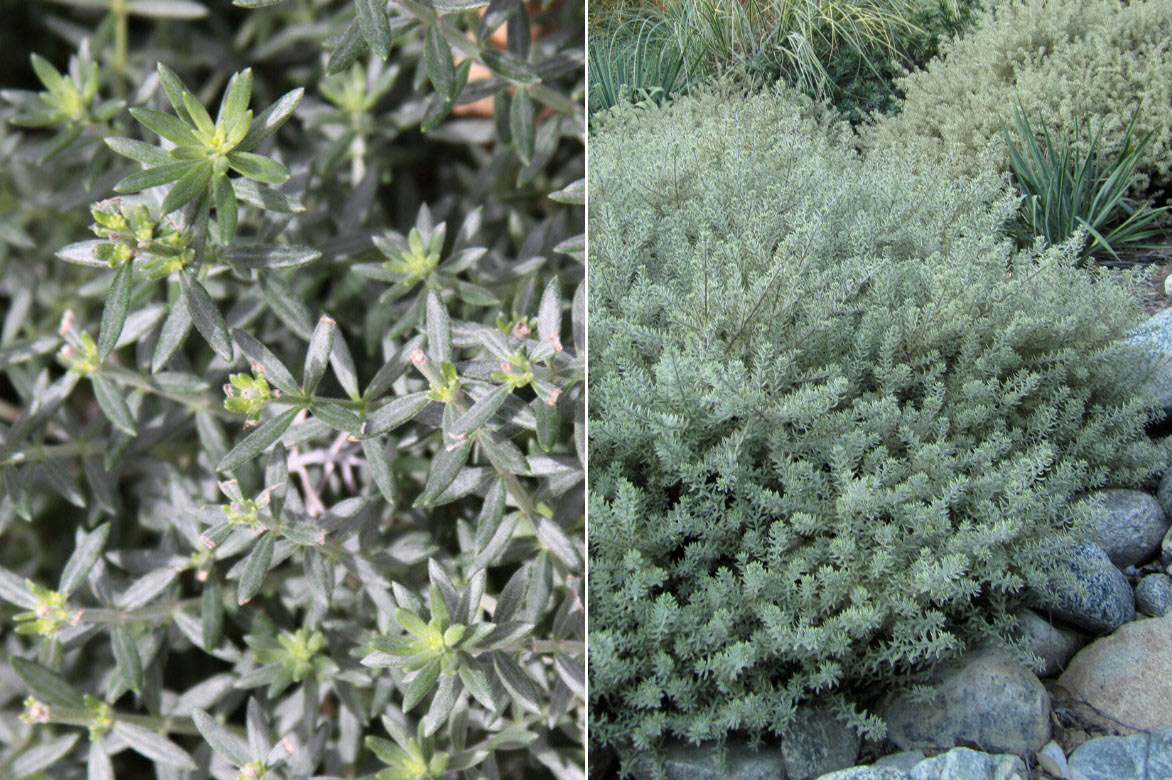
The fine, silvery foliage of Westringia fruticosa (photos: Drew Avery / Bri Weldon)
From a woody stump, the Australian rosemary forms a dense, rounded bush with a slightly spreading habit, ranging from 50 cm to 3 m in height and width, depending on the variety and growing conditions. The woody, square-sectioned shoots bear evergreen foliage. It consists of small, linear, lanceolate, and rigid leaves, resembling needles 1.5 to 2.5 cm long. They are less tough than those of rosemary and arranged in whorls of 3 to 4 on the woody branches. They are edged and green to grey-green on the upper side, woolly and greyish-white underneath. They are margined with white in the Westringia fruticosa ‘Smookie’. Very similar to those of rosemary, they are, however, not aromatic.
Flowering occurs from May to September, sometimes in successive waves throughout the year, but more sporadically. The bilabiate flowers are typical of the Lamiaceae family. Tubular, they open into 2 lobes for the upper lip and 3 lobes for the lower lip. Quite large, measuring up to 1.5 cm in diameter, they bloom solitarily at the tips of the shoots, inserted in the axils of the leaves. These delicate flowers are usually pale blue speckled with purple at the throat, more rarely white.
This fragrant, melliferous, and nectariferous flowering attracts numerous pollinating insects from spring to summer.
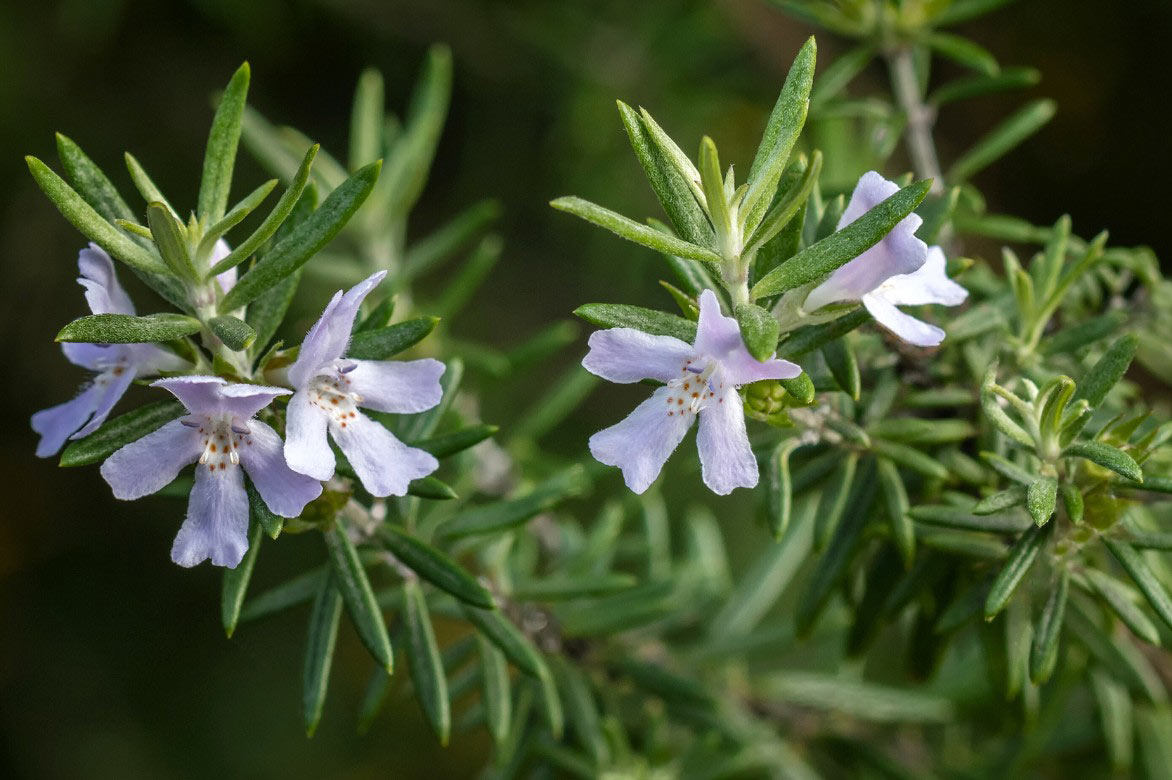
The delicate flowering of Westringia fruticosa
Main species and varieties
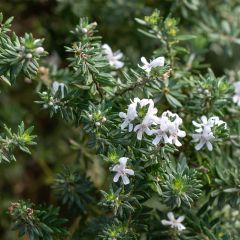
Westringia fruticosa Mundi
- Flowering time May to October
- Height at maturity 50 cm
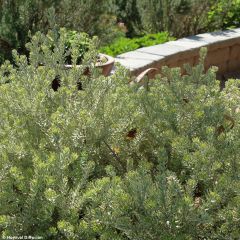
Westringia fruticosa Smookie
- Flowering time May to October
- Height at maturity 1 m
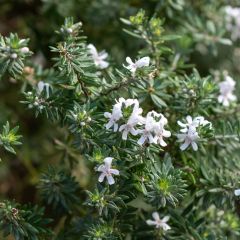
Westringia fruticosa White Rambler
- Flowering time May to October
- Height at maturity 1 m
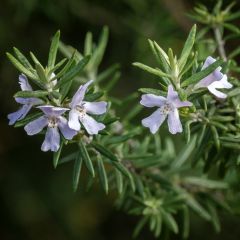
Westringia fruticosa
- Flowering time May to October
- Height at maturity 1,20 m
Discover other Westringia Rosemary
View all →Available in 0 sizes
Available in 1 sizes
Available in 1 sizes
Available in 1 sizes
Available in 1 sizes
Available in 1 sizes
Available in 1 sizes
Planting the Australian Rosemary
Where to Plant Australian Rosemary?
Naturally growing on Australian coastal heathlands, the Westringia thrives easily in gardens along the Atlantic or Mediterranean coast. Relatively frost-sensitive (down to -5/-6°C once well-established), it will do well in pots in colder regions. It is perfectly equipped to handle drought and also tolerates sea spray in coastal gardens. It enjoys warm, sunny exposures, tolerating partial shade in the most exposed regions. It prefers light, stony, sandy, poor, and most importantly, very well-drained soils. In reality, it is not very demanding regarding soil type and will even grow in clayey or loamy soil. It is an excellent candidate for dry areas, where it forms an evergreen bush all year round.
It fits as an accent in a bed with other mild-climate bushes, or in a beautiful seaside hedge, left free or pruned. It can also be planted on a dry, sunny slope or in a pot to overwinter frost-free in colder, wetter regions. And, since it tolerates regular pruning well, it can be shaped into topiary according to your preferences.
When to Plant Australian Rosemary?
The Westringia is best planted in spring, after the last frosts, or in autumn, from September to October.
How to Plant?
In heavy soil, incorporate gravel or coarse sand at the bottom of the planting hole to improve drainage. In very chalky soil, it is advisable to add heather soil or peaty compost at planting.
In the Ground
- Dig a planting hole about 60 cm in all directions. Ideally, it should be two to three times the size of the root ball.
- Optionally, place gravel or coarse sand in the hole, mixed with the planting soil, to improve drainage.
- Remove the Westringia from its pot and place it in the centre of the planting hole.
- Fill in with the excavated soil, optionally mixed with sand, then lightly firm it down.
- All that’s left is to water generously.
Ensure successful planting of your Westringia by following our advice in our video “How to Plant a Bush”.
In a Pot
The Westringia adapts very well to pot cultivation in a well-draining substrate to avoid stagnant moisture around the roots.
- In a container at least 50 cm in diameter, place a layer of gravel or clay pebbles at the bottom.
- Plant in a mixture of garden soil or compost for Mediterranean plants and non-chalky sand.
- Water at planting, then sparingly.
- In colder regions, remember to bring the pot indoors for winter.
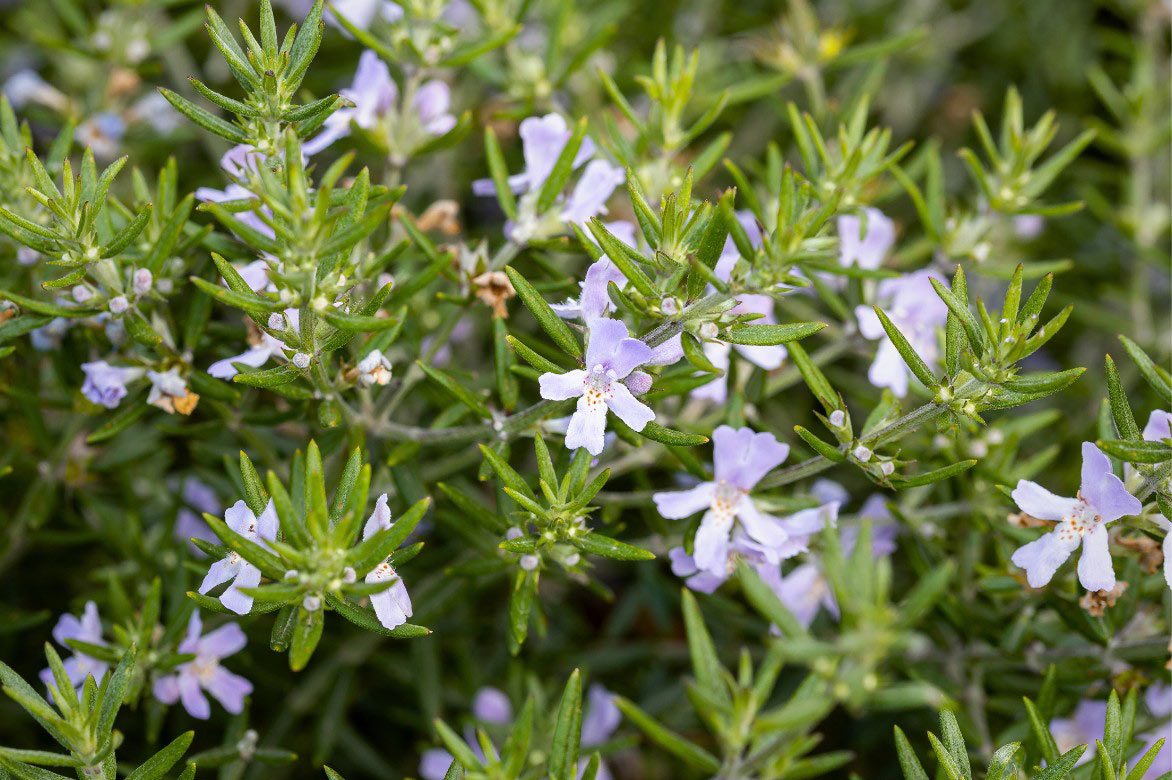
Maintenance, pruning and care
Once planted, the Westringia requires little maintenance. It is drought-resistant once well-established. Monitor watering during the first two summers. After that, water only during prolonged dry spells and always sparingly. Regular but spaced-out watering will, however, support its flowering. In pots, ensure more frequent watering while always allowing the substrate to dry out between waterings.
Mulch the base with mulch or dry leaves to limit weed growth. In regions north of the Loire, bring potted specimens indoors before the first frosts.
The Westringia is very resistant to diseases and parasites.
When and how to prune the Westringia?
The Westringia can be left to grow freely or pruned to limit its size. An annual pruning stimulates flowering and encourages a dense habit. This should be done at the end of winter, in March, outside frost periods. A light pruning, aimed at removing dead or diseased branches and shaping the plant to your preferences, is usually sufficient. After flowering, trim the spent stems with pruning shears. If you wish to prune more severely to limit its height in a hedge, for example, do so just after the peak of the main flowering.
It is also possible to prune the Westringia into topiary, its rounded and dense habit allowing for very regular shapes.
Multiplication
The easiest method to propagate the Australian rosemary is propagation by cuttings of semi-lignified stems, after flowering. Sowing with seeds harvested in autumn is possible in spring on a warm and humid bed.
- In September, cut lignified and flowerless shoots about 10 to 15 cm long.
- Remove the lower leaves.
- Plant the cuttings in a mixture of compost and sand or perlite to ensure good drainage.
- Keep the substrate slightly moist and place the cuttings in a frost-free, bright location, but out of direct sunlight.
- Roots should start to develop after a few weeks.
- Transplant the cuttings into individual pots before moving them to the garden the following spring.
- Water well during the first year after planting.
→ Learn more in our tutorial: How to propagate Westringia?
How to pair Australian rosemary?
Pair the Westringia with plants that share its cultivation needs to create a drought-resistant and low-maintenance garden. It will easily find its place in dry gardens and coastal gardens alongside drought-resistant perennials and Mediterranean perennials. In a flower bed, it will thrive alongside sages, Helichrysum italicum, the Rockrose, the Lavender Cotton, sunroses, artemisias, and sedums. Of course, it will be the perfect companion for its cousin, the rosemary, both beautiful even in winter.
It is also ideal for accompanying Mediterranean bushes such as ceanothus, mimosas, oleanders, Callistemon, Leptospermum, or grevillea.
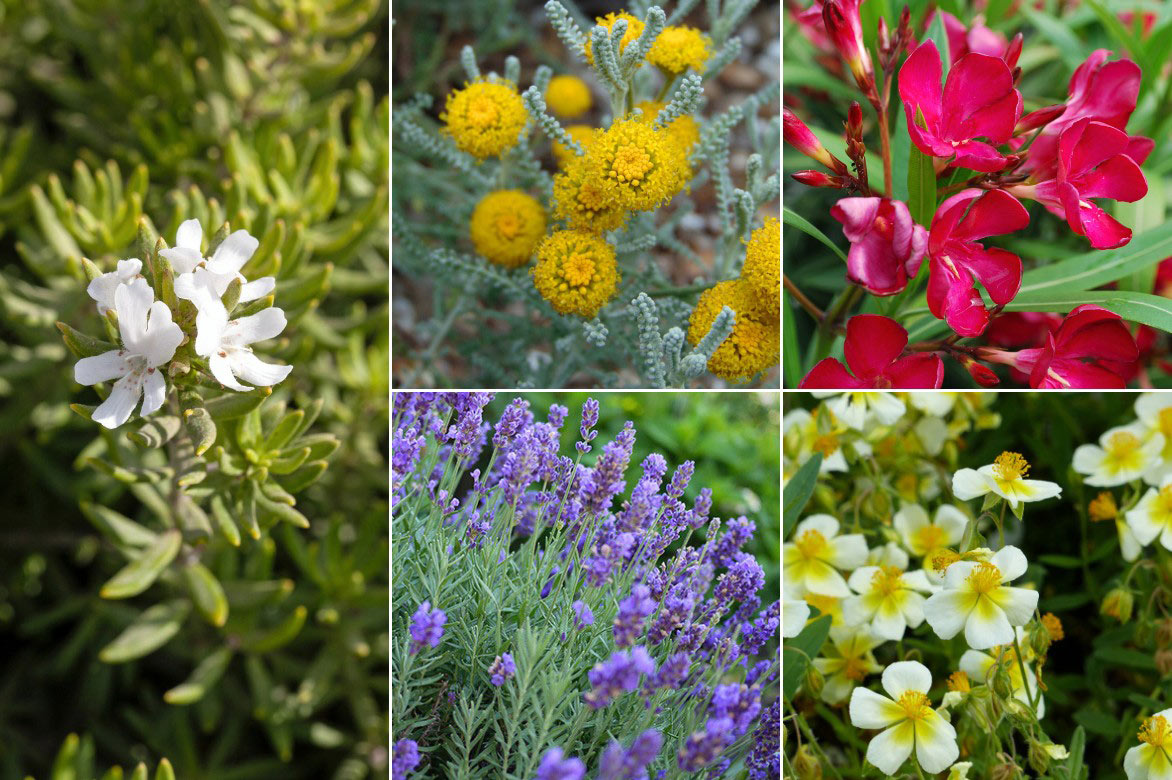
Westringia fruticosa, Santolina chamaecyparissus, Oleander, Lavandin (Lavandula intermedia Dutch group), Sunrose ‘Elfenbeinglanz’
- Subscribe!
- Contents
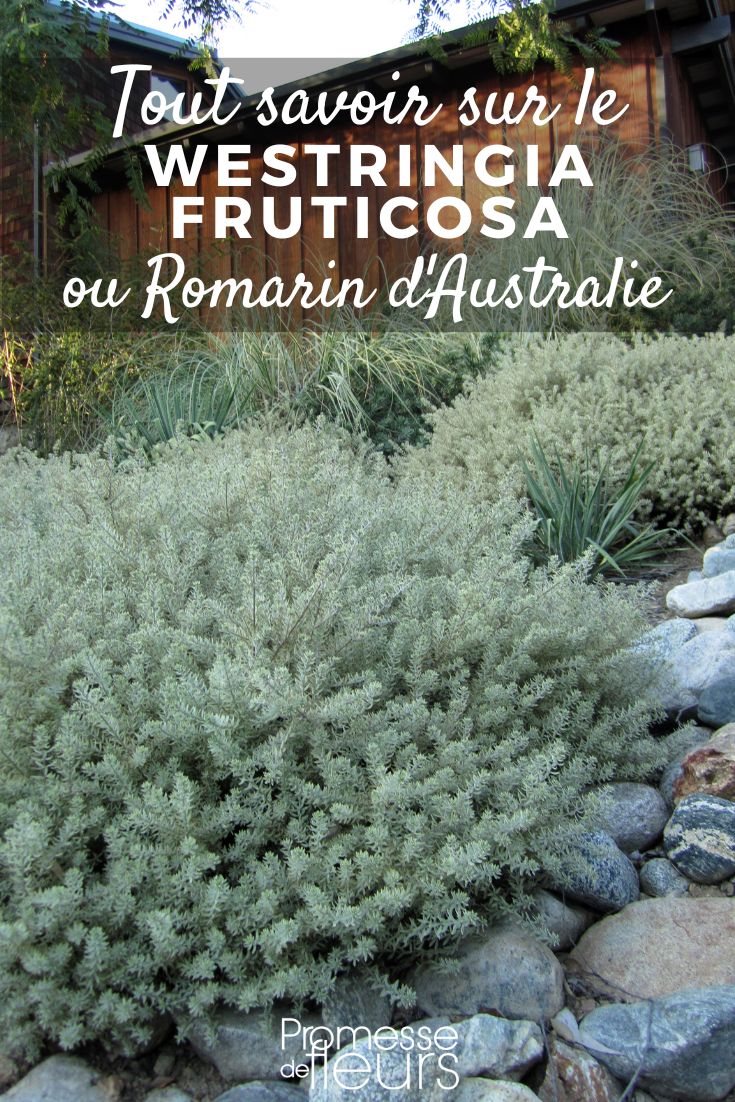




































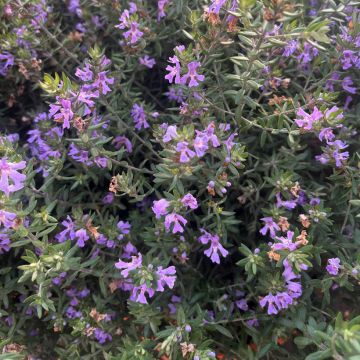
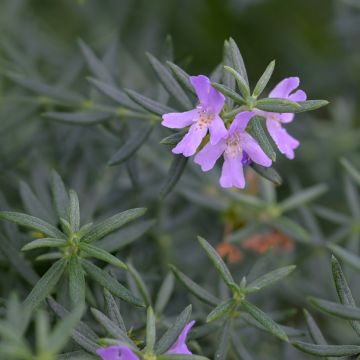
Comments